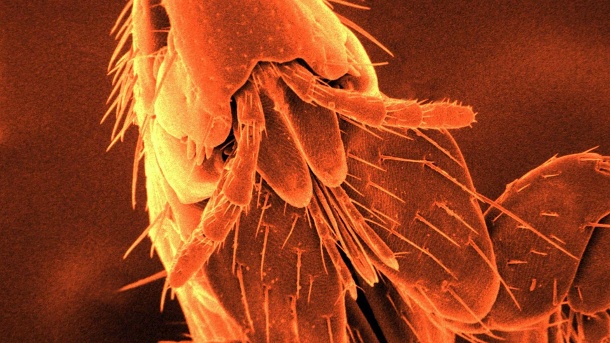
Especially pet owners are aware of the annoying parasites: fleas . Which symptoms you recognize flea infestation on yourself or your pet, how to treat flea bites and how you fight an infestation and then permanently prevent.
Recognize a flea bite in humans
Flea bites mostly appear grouped. If you see several red spots that are very close together, they may be flea bites. The problem with this diagnosis: Often the skin irritations resemble an allergic reaction or measles.
In addition, flea bites trigger a strong itching . In any case, avoid scratching the spots. Even small wounds are a gateway for pathogens that can cause infections. Especially with your children, make sure that they do not scratch too hard.
How to treat a flea bite
As an emergency measure against the itching, you should cool the affected skin. Analgesic and cooling gels against insect bites from the pharmacy are also recommended.
If your body is allergic to flea bites, you should see a doctor and get prescribed ointment or tablets with antihistamines. Low-dose ointments containing antihistamines, cortisone or hydrocortisone are available over the counter from the pharmacy.
Fleas in humans: transmission by dog and cat
The human flea is considered almost extinct in northern and central Europe due to good hygiene conditions. This was responsible in the Middle Ages for the transmission of the plague. In humans, fleas therefore usually occur in the form of cat and dog fleas. Especially when your pet is out and about a lot, it can catch the annoying parasites through contact with other animals such as hedgehogs, mice and stray species and then transfer them to humans.
Once the fleas are in the house, they easily become a stubborn plague. They can survive for up to a year without food in joints, cracks and corners. In addition, they multiply rapidly. A female lays up to several hundred eggs, preferably in upholstery and carpets. Even if you do not have pets, you can catch fleas, for example, during a walk in the woods, visiting animal owners or gardening.
Can fleas transmit diseases?
Even though the plague is barely a threat in Central Europe, cat and dog fleas can spread disease. These include typhus, polio , Lyme disease and swine fever. The risk for this is significantly higher in warm regions than in Germany. In addition, fleas can transmit other parasites such as the cucumber core tapeworm to humans. In particular, children are at risk if they cuddle and play a lot with their infected pet.
Detect flea infestation in dogs and cats
A flea infestation in cats and dogs is evident from increased itching and the associated scratching.
Often a flea infestation of your pet goes hand in hand without visible symptoms. Here, the investigation helps with a special flea comb. This has particularly tight prongs, which can be foreign bodies in the fur comb out well. Run the comb through the fur of your pet and then tap it on a light cloth. If you see rusty brown spots on the cloth, these are the excretions of the parasites.
In general, if you have a flea infestation of your pet, you should seek advice from your veterinarian about suitable treatment. Very effective are so-called spot-on funds. These drops are applied behind the ears or neck of the animal so they can not be licked. The active ingredient then spreads throughout the body and kills the parasites.
Fight fleas in the apartment
If you have detected a flea infestation, you should act quickly to avoid further spreading of the parasites. Wash your bedding, clothing and other textiles at least 60 degrees Celsius in the washing machine – at hot temperatures, the larvae die of dog fleas and cat fleas. Alternatively, you can store sensitive textiles in the freezer for a few days.
Especially your pet’s sleeping place, textile furniture, curtains, floors and carpets should be regularly and thoroughly vacuumed for a few days. The vacuum cleaner bag must then be disposed of directly, so that the parasites can not escape. Tip: Use a steam cleaner to kill not only the adult fleas, but also the larvae.
Also treat the boxes and carrycots for your pet with an anti-flea agent. If the infestation continues, it is advisable to call an exterminator.
How to prevent fleas
As a pet owner, you can prevent a flea infestation with a few simple remedies. This includes that dogs and cats are not allowed in bed or on the upholstered furniture. This is especially true for animals that are often outdoors.
If an infected animal has access to all rooms, the fleas and their eggs can spread everywhere. Keep the apartment, especially floors and hard to reach corners and joints always clean. This will prevent the parasites from settling for a long time.
In addition, comb your pet’s fur regularly or wash it with an anti-flea shampoo. Also flea collars can ward off the parasites.

